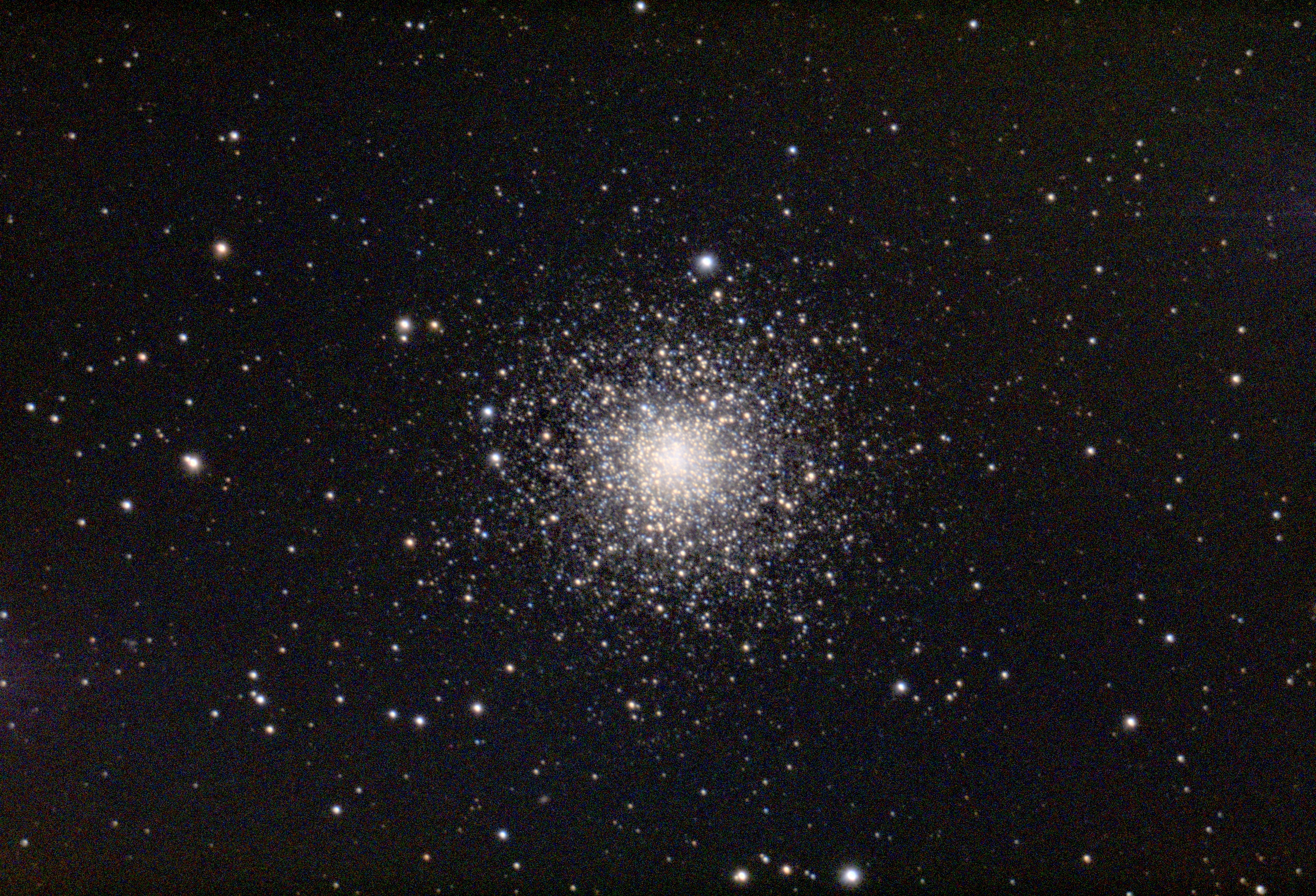Details
This image was created from frames taken using a Celestron C8 telescope, which moved with the rotation of the earth, allowing us to align the exposures on top of each other to get a stacked image. To start with processing I took previously recorded flat and dark frames to create a master flat and a master dark frames. These are applied to the the light frames to calibrate them, removing any effects of lens dust, aberrations from electrical sensors, hot pixels, and more. Then (after extracting the background to remove the gradient), you can register the best of the images, remove the ones of poor quality (like some that were recorded when it was not quite fully dark), and then align them using similar stars. Finally for pre-processing, you can stack these images to get a much brighter, nicer looking cluster.
Next, we move on to post-processing. IN post, we crop the image to remove any distortion on the edges from alignment. Then, you once again run it through background extraction and then color calibrate it using stars of known colors. It is possible to reduce some of the noise, though mine always seems to to never affect the image. Finally, you'll want to stretch the image and adjust histograms to make the overall image brighter, increase the contrast (if you would like), saturate the color, and adjust any other factors. Then you have your image.

